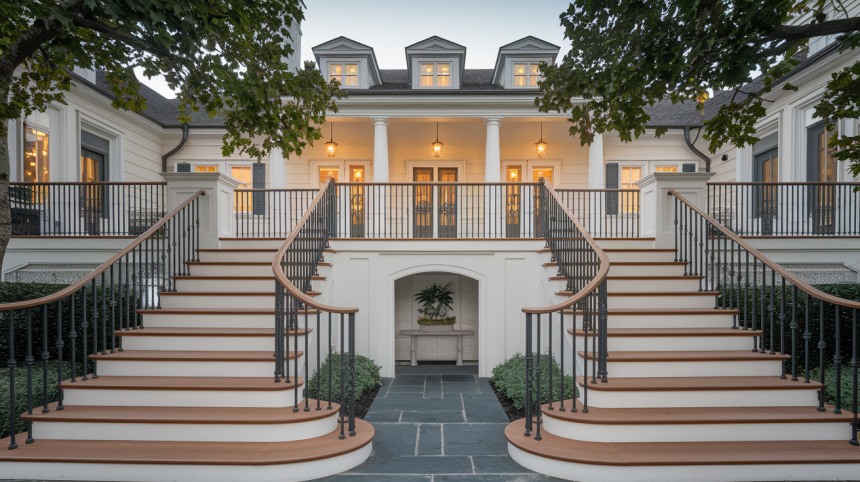Looking to make your home stand out? Bifurcated stairs – the kind that split into two paths – can catch the eye without saying a word. These Y-shaped staircases do more than just connect floors.
Think about it – you’re climbing up, and suddenly, the staircase branches off in two directions. Pretty cool, right? These split staircases can turn an ordinary home into something special without breaking the bank.
Many homeowners get confused about bifurcated stairs. How much space do they need? Are they hard to build? What styles work best? The good news is that they aren’t as tricky as they look.
This guide will cover everything about split staircases—from basic designs to costs, materials, and safety tips. By the end, you’ll know if these eye-catching stairs are right for your home.
What are Bifurcated Stairs?

Ever seen stairs that can’t make up their mind which way to go? That’s the charm of bifurcated stairs! These eye-catching staircases start as one path but then split into two different directions at a landing halfway up – just like a giant letter Y in your house.
The word “bifurcate” means “to split in two,” which is exactly what these stairs do.
Each branch takes you to different parts of your upper floor. And no, they’re not just for fancy mansions – many regular homes use this smart design, too.
Why do people love them? While regular stairs get you from point A to point B, bifurcated stairs create natural traffic flow.
They guide family and guests to different areas upstairs without crowding. Plus, they look way cooler than boring straight stairs!
Why Bifurcated Stairs Make Homes Stand Out
These split staircases don’t just get you upstairs – they make your home pop in ways you never thought possible!
1. Visual Impact
- Bifurcated stairs create an instant wow factor. They become the focal point in any entryway, and your guests will notice them right away.
- These stairs add style without looking too fancy. A basic need like stairs turns into a standout design feature in your home.
2. Space Benefits
- These stairs fit better in wide, shallow spaces. They create natural paths to different areas upstairs. You’ll need fewer hallways on the upper floor.
- The design offers more wall space underneath for furniture. Many homeowners use this area for storage or display shelves.
3. Design Options
- Railing styles range from simple wood to fancy wrought iron. Glass options give a modern look, and balusters can match any home style.
- Step materials include hardwood, carpet, stone, or tile. The landing can feature built-in storage or display areas for photos and art.
4. Practical Advantages
- Traffic flow improves as people can go in different directions. The mid-way landing provides a safety rest point. There’s a natural separation between private and public areas upstairs.
- Sound control improves as noise doesn’t travel straight up one column. Elderly family members appreciate the rest spot halfway up.
Top Design Trends for Bifurcated Staircases
Ready to make a statement? Check out these photo-worthy stair designs that can become the heart of your home!
Modern Minimalist
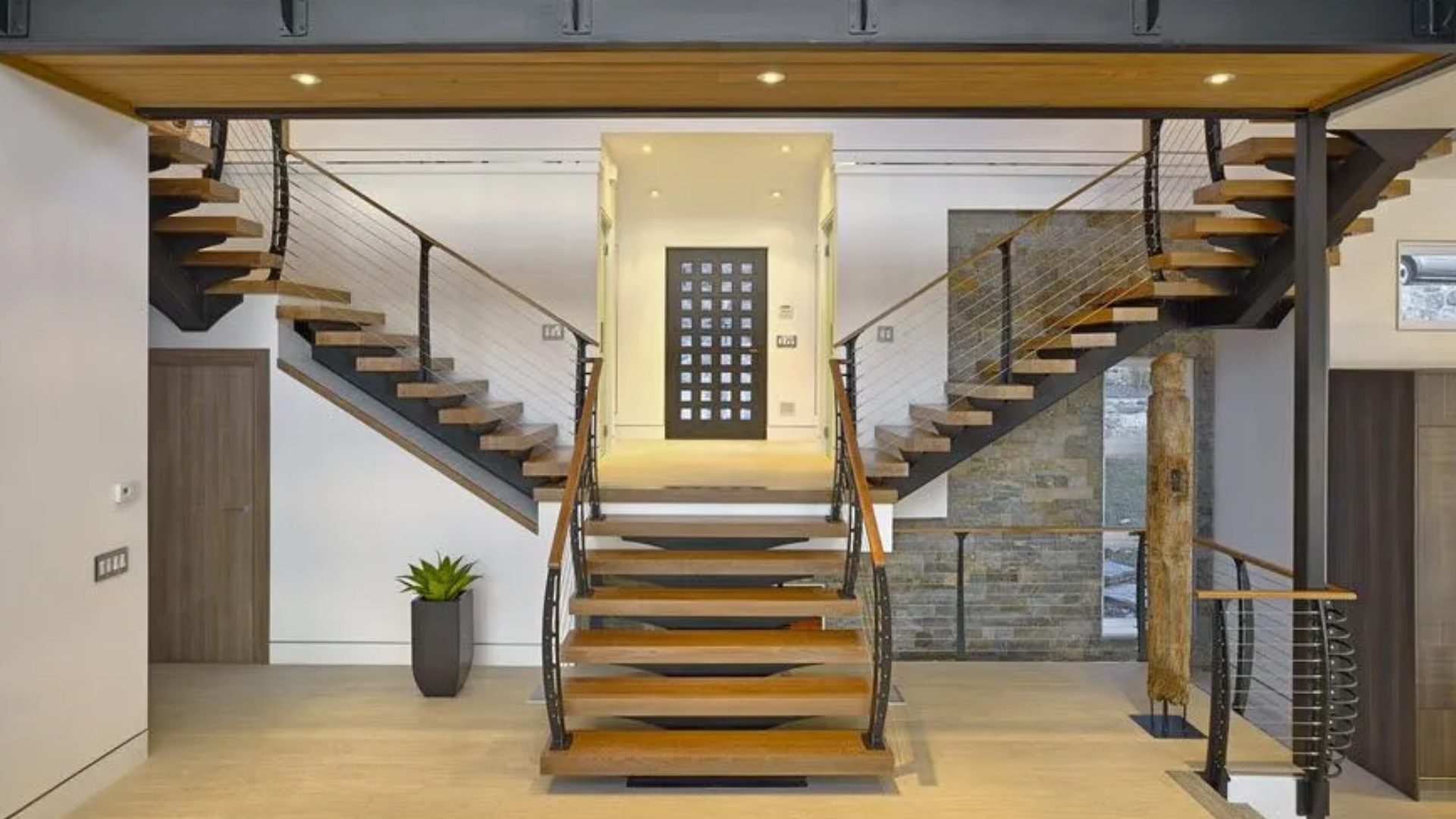
Clean lines make a big statement. For an open feel, try glass railings with metal posts. White risers with dark wood treads create a sharp contrast. Skip the carpet for a sleek look.
The landing works great with a simple bench or a small table.
Classic Grace
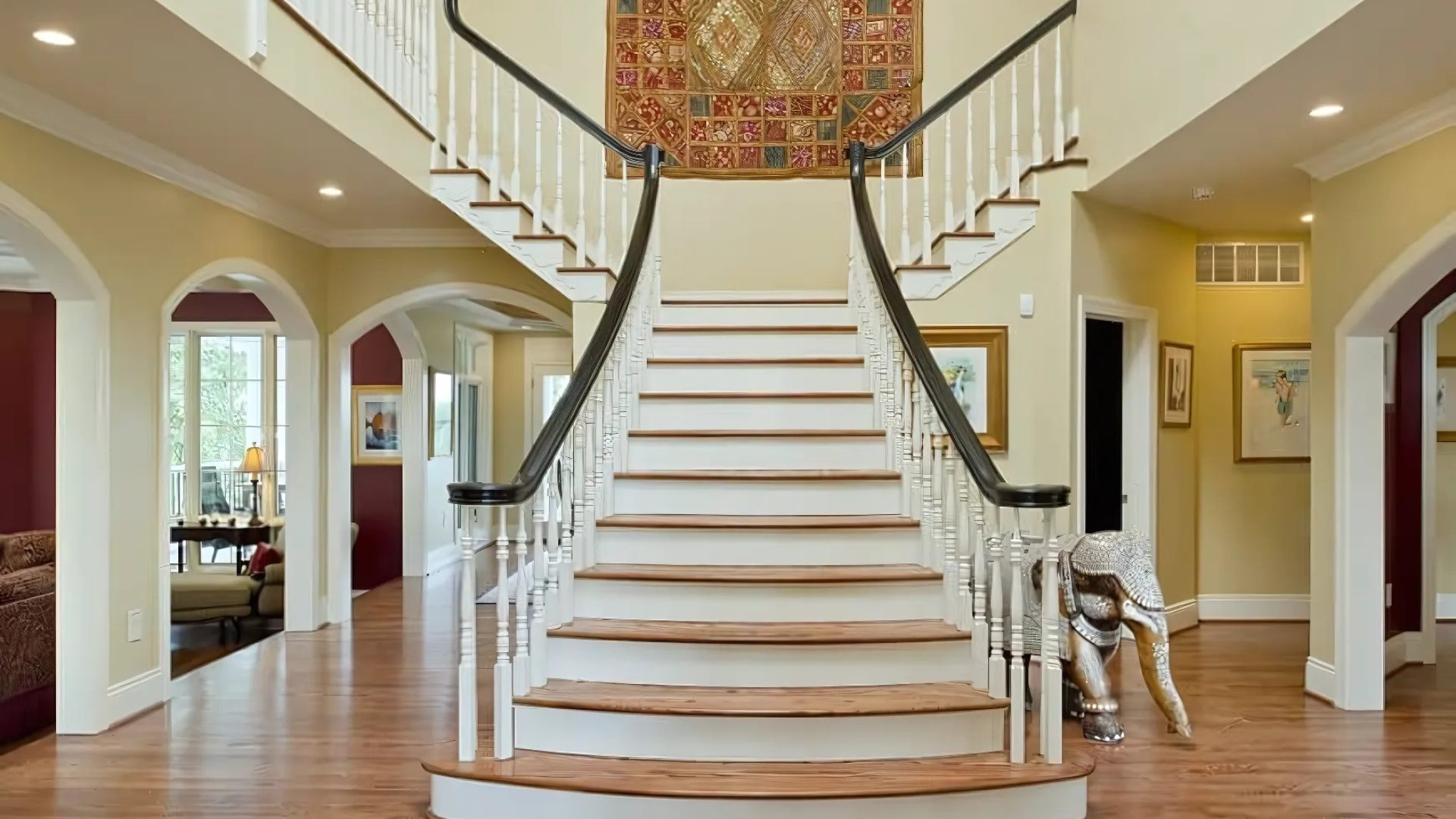
The dark wood throughout feels warm. Curved steps on each branch soften the look. Try ornate wood balusters with detailed carvings. A fancy chandelier above the landing pulls eyes upward.
Place a round table with fresh flowers on the landing for extra charm.
Rustic Farmhouse

Reclaimed wood brings character to each step. Wrought iron railings add a touch of country style. The design is simple but sturdy.
White risers against natural wood treads create a cozy feel. Decorate the landing with vintage trunks or baskets.
Contemporary Mix
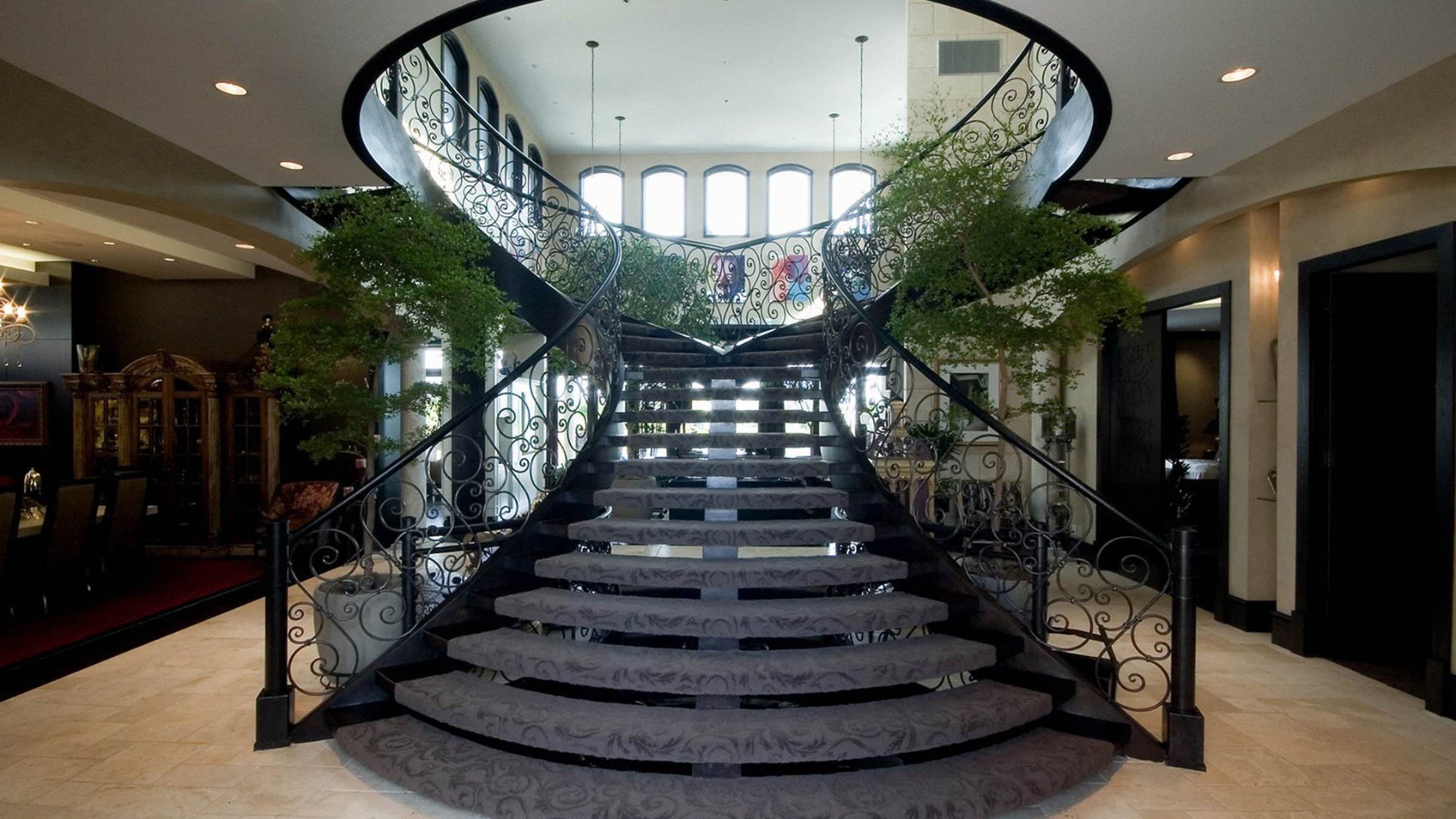
Combine materials like wood, metal, and concrete for an edgy look. Floating steps without visible supports look amazing. Try cable railings for a barely-there effect. Add LED lighting under each step for nighttime safety and a wow factor.
The landing works well with a modern sculpture or art piece.
Coastal Breeze
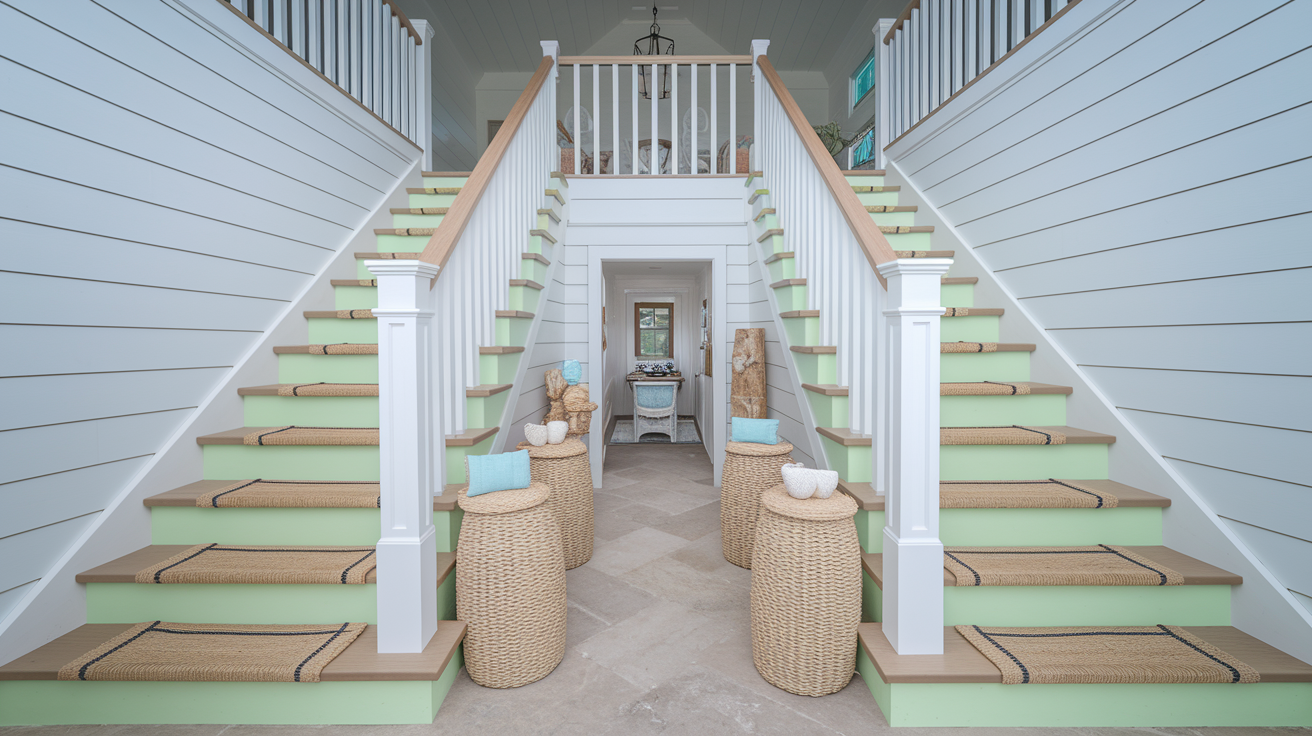
Light blue or seafoam green risers feel fresh and beachy. White wooden railings remind you of seaside porches, and natural jute runners add texture and safety.
Shell collections or beach finds make perfect landing decorations. Keep wood finishes light and airy like driftwood.
Industrial Edge
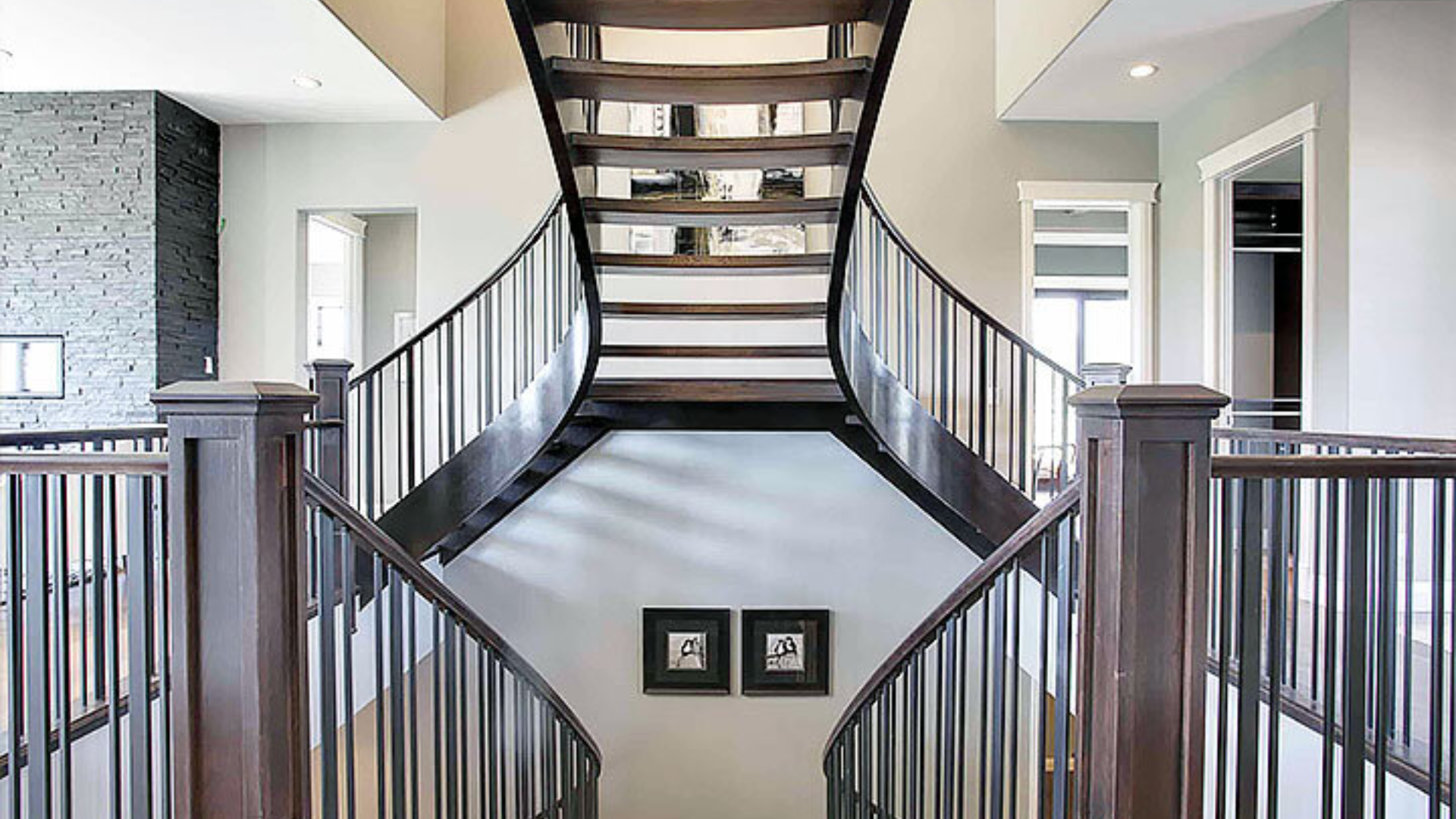
Exposed metal supports give an urban warehouse feel. Pipe railings painted black look both tough and trendy. Use reclaimed factory flooring for treads. Concrete or metal landings stand up to heavy use.
Add vintage factory lights above for perfect mood lighting.
Alternative Varieties of Staircases
Not sure if bifurcated stairs are right for your home? Here’s what else is out there!
Straight Stairs
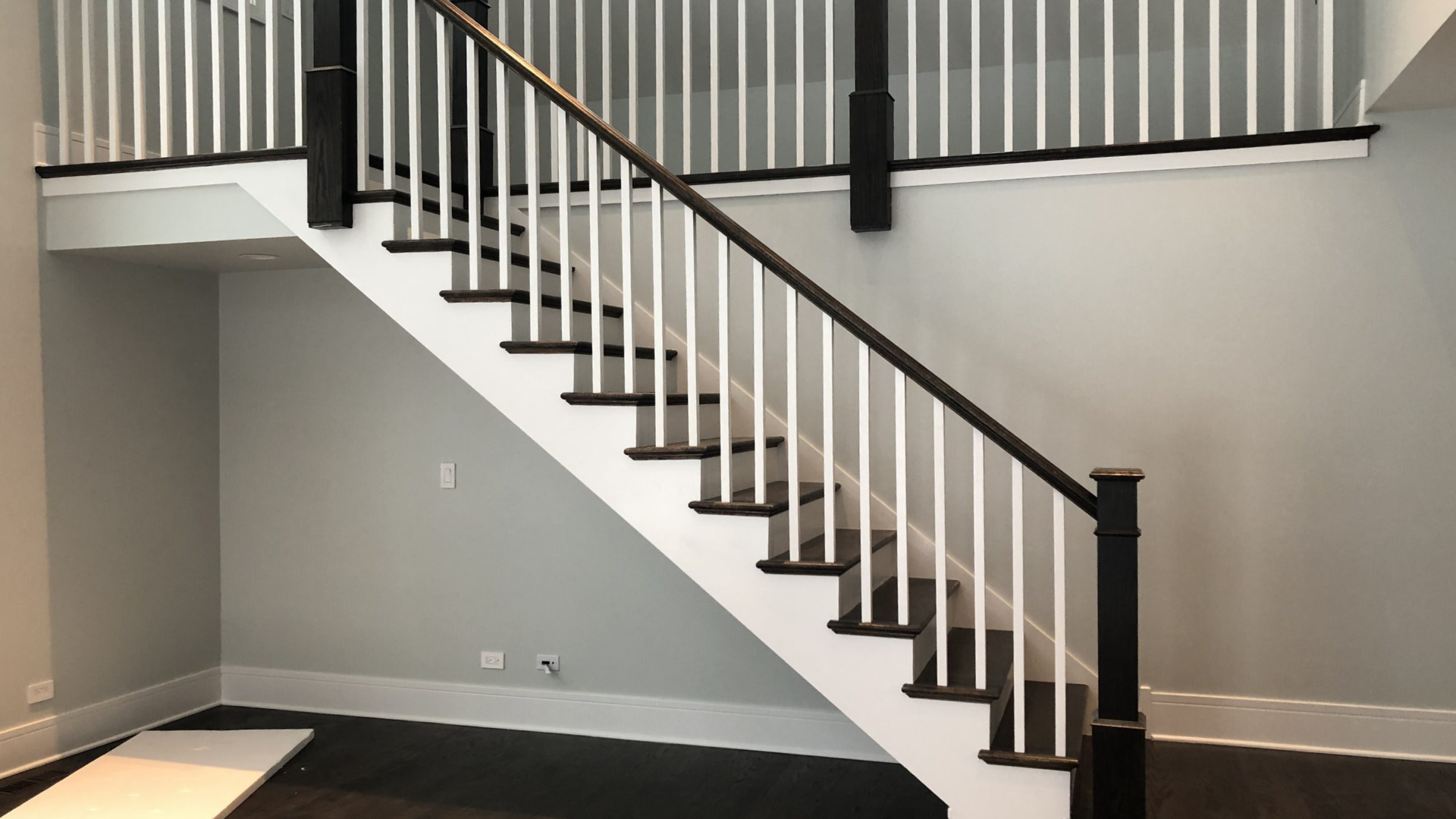
These are the most basic stairs you’ll find. They go straight up without any turns or platforms, and most people know them well. They take up the least width but need the most length, and building them costs less than other types.
Spiral Stairs

Spiral stairs twist around a center pole. Each step is pie-shaped and gets wider as you move away from the center. These stairs save tons of space. They work great in tight spots like small apartments or as a second staircase. But they’re harder to climb, especially when carrying things.
L-Shaped Stairs
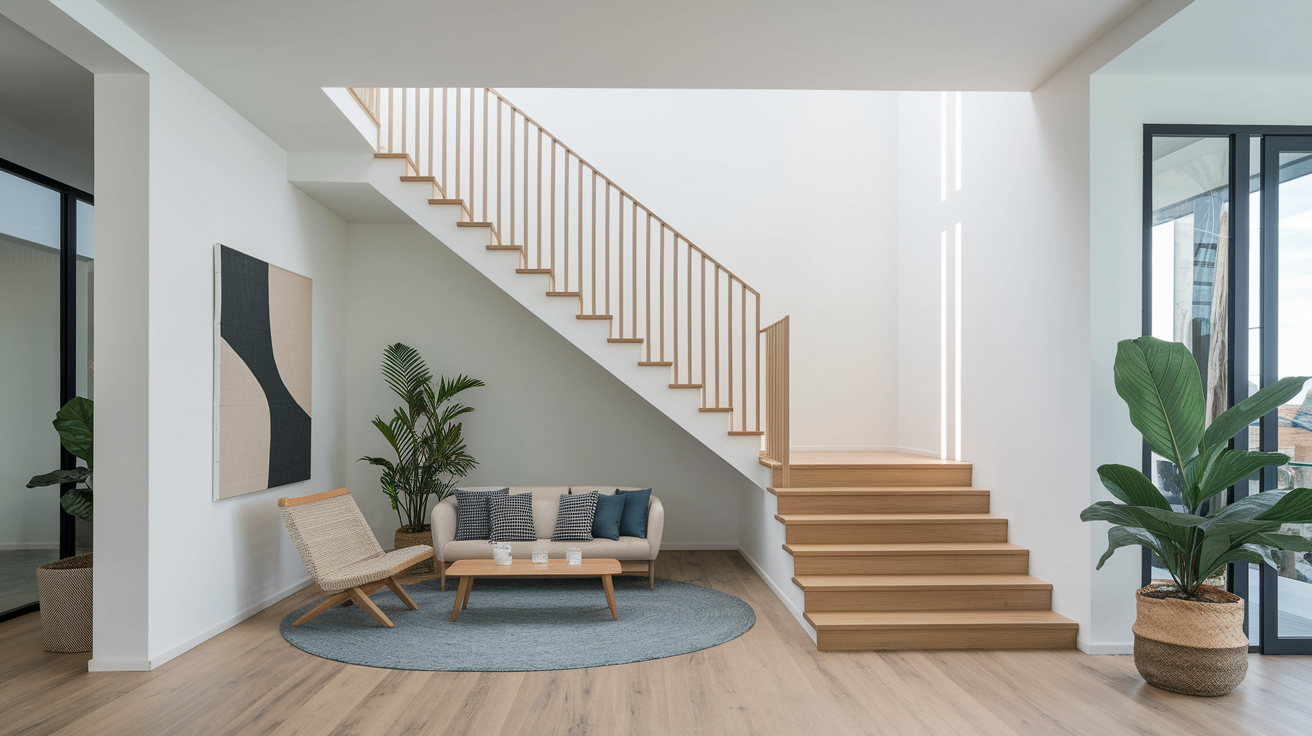
L-shaped stairs have one turn, usually 90 degrees, with a landing at the turn point. They fit nicely in corners. The landing gives a place to rest when going up. These stairs work well in homes with a bit less space than needed for straight stairs. Many modern homes choose this style.
Winder Stairs
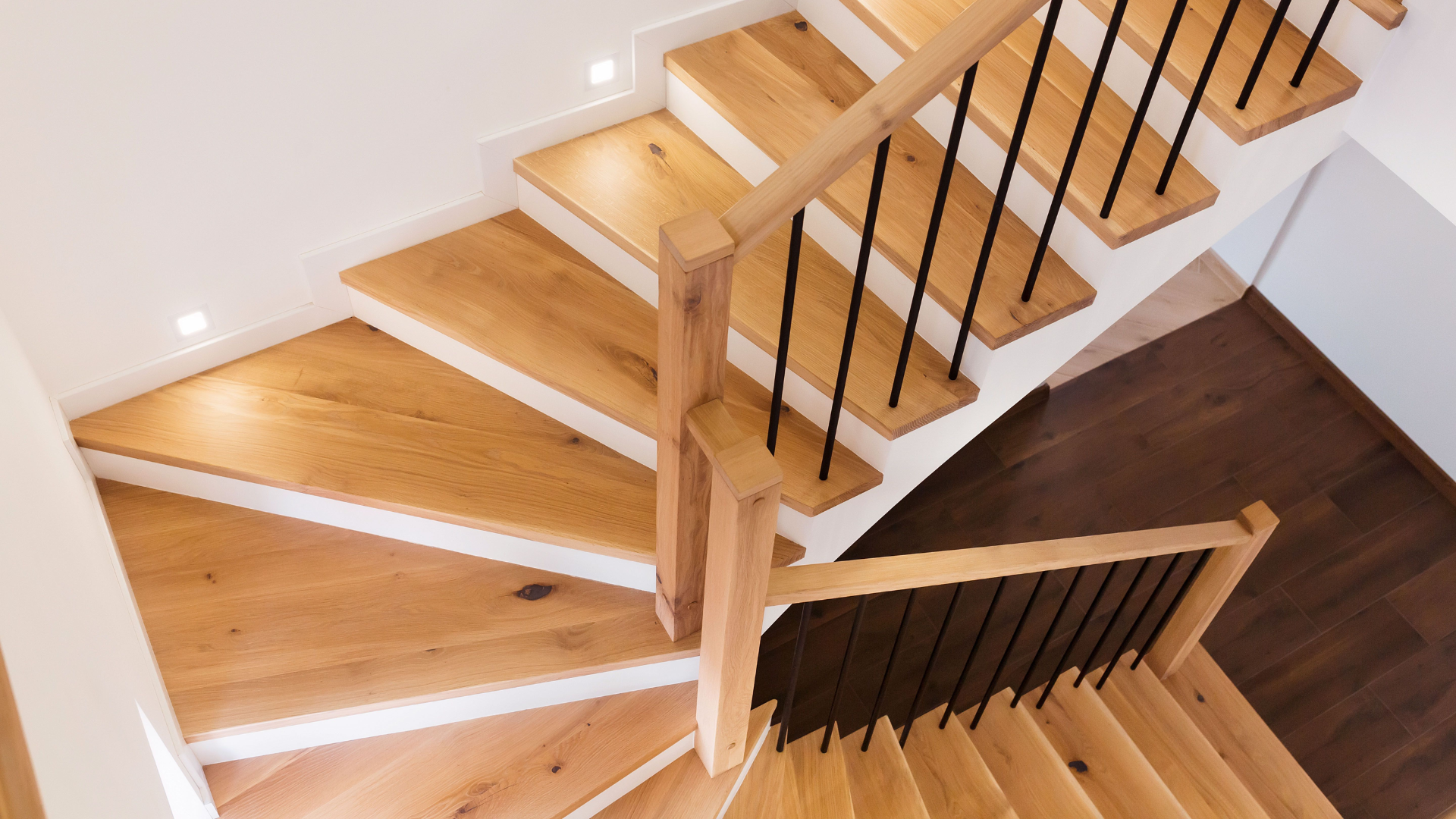
Winder stairs are like L-shaped stairs but without the landing. Instead, they use wedge-shaped steps at the turn, saving more space than L-shaped stairs. The turn can be 90 degrees or more. These stairs have an old-world charm but can be trickier to navigate.
Comparing Staircase: How Each Type Measures Up
Choosing the right stairs depends on your space, budget, and style needs. The table below shows how bifurcated stairs compare to other options. Use this guide to find the perfect fit for your home.
| Feature | Bifurcated | Straight | Spiral | L-Shaped | Winder |
|---|---|---|---|---|---|
| Space Needed | Large width, medium length | Narrow width, long length | Very small footprint | Medium width, medium length | Small-medium footprint |
| Cost | High | Low | Medium-High | Medium | Medium |
| Ease of Use | Very Easy | Easy | Difficult | Easy | Moderate |
| Visual Impact | High | Low | Medium-High | Medium | Medium |
| Safety | High (has landing) | Medium | Low | High (has landing) | Low-Medium |
| Best For | Grand entrances, wide homes | Simple homes, tight budgets | Very small spaces | Corner spaces | Traditional homes, saving space |
| Building Difficulty | Complex | Simple | Complex | Moderate | Moderate |
| Furniture Moving | Easy | Easy | Very Difficult | Moderate | Difficult |
Final Thoughts on Bifurcated Stairs
Bifurcated stairs can truly change how your home looks and feels. While they need more space than some other options, the impact they make is worth considering.
Even if you go for a modern glass design or a classic wooden style, these split staircases create a lasting impression on anyone who visits. They’re not just stairs – they’re a statement about your home.
Remember that good planning is key. Before making final decisions, talk to a builder who knows about these special stairs. Consider your space, budget, and how you’ll use the stairs every day.
Not every home needs bifurcated stairs, but for the right space, they offer both beauty and function that other staircases simply can’t match.
When done right, they become much more than just a way to get upstairs.

